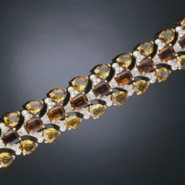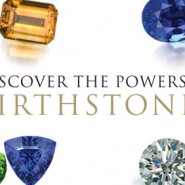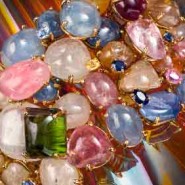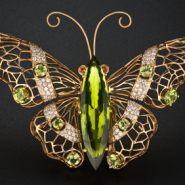As the majority of the country heads into cooler temperatures of late fall/early winter, November’s birthstone, citrine, provides a much needed burst of sunshine. The warm, sunny color of this popular gemstone inspired its name, derived from the French word “citron,” meaning “lemon.” Its color ranges from saturated yellow to reddish orange to pale yellow.
Read More >>The October birthstone, opal, is noted for its individuality, magic, and mystery. Its unique display of flashing rainbow colors is unlike any other gem, and has been compared to volcanoes, galaxies, and fireworks.
Read More >>Tourmaline has one of the widest color ranges of any gemstone. While October’s birthstone can be found in virtually every hue of the rainbow, the most popular varieties range from rich reds and pinks, to greens and yellows, to blues and violets. Some tourmalines are bi-colored and parti-colored, exhibiting two or more colors in a single gem – a feature known as color zoning.
Read More >>Think of every passing year as an opportunity to celebrate with your birthstone. In fact, people have been wearing birthstone jewelry since the 15th century in Poland, when they were encouraged to own all 12. And while birthstone secrets and lore can be found right here on our blog, today we share what makes YOUR birthstone a powerful statement of your finest qualities.
Read More >>September’s birthstone is perhaps most known for the extraordinary sapphire ring worn by Kate Middleton, originally belonging to Princess Diana. Taking a cue from the British royals, celebrities like Penelope Cruz have fueled the colored gemstone engagement ring trend, with sapphire leading the way.
Read More >>August’s fascinating birthstone may be called the “extreme gem” because it is formed in the most extreme conditions, found in lava, meteorites and deep within Earth’s mantle. Peridot has been found in pallasite meteorites, which contain remnants of our solar system’s birth. In 2006, peridot was found in comet dust brought back from the Stardust robotic space probe.
Read More >>





